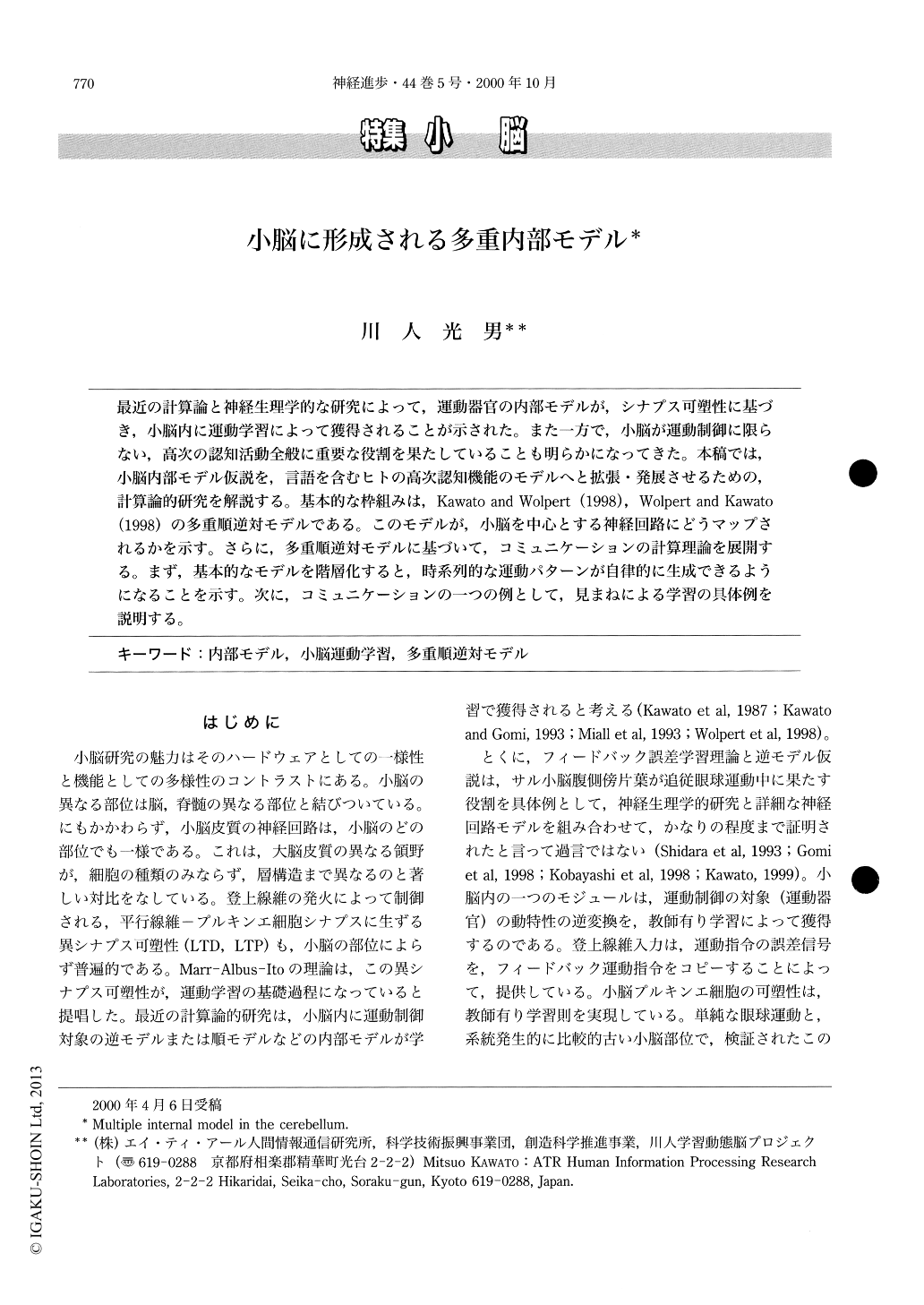Japanese
English
- 有料閲覧
- Abstract 文献概要
- 1ページ目 Look Inside
最近の計算論と神経生理学的な研究によって,運動器官の内部モデルが,シナプス可塑性に基づき,小脳内に運動学習によって獲得されることが示された。また一方で,小脳が運動制御に限らない,高次の認知活動全般に重要な役割を果たしていることも明らかになってきた。本稿では,小脳内部モデル仮説を,言語を含むヒトの高次認知機能のモデルへと拡張・発展させるための,計算論的研究を解説する。基本的な枠組みは,Kawato and Wolpert(1998),Wolpert and Kawato(1998)の多重順逆対モデルである。このモデルが,小脳を中心とする神経回路にどうマップされるかを示す。さらに,多重順逆対モデルに基づいて,コミュニケーションの計算理論を展開する。まず,基本的なモデルを階層化すると,時系列的な運動パターンが自律的に生成できるようになることを示す。次に,コミュニケーションの一つの例として,見まねによる学習の具体例を説明する。
A number of internal model concepts are now widespread in neuroscience and cognitive science. These concepts are supported by behavioral, neurophysiological, and imaging data ; furthermore, these models have had their structures and functions revealed by such data. In particular, a specific theory on inverse dynamics model learning is directly supported by unit recordings from cerebellar Purkinje cells. Multiple paired forward inverse models describing how diverse objects and environments can be controlled and learned separately have recently been proposed.

Copyright © 2000, Igaku-Shoin Ltd. All rights reserved.


